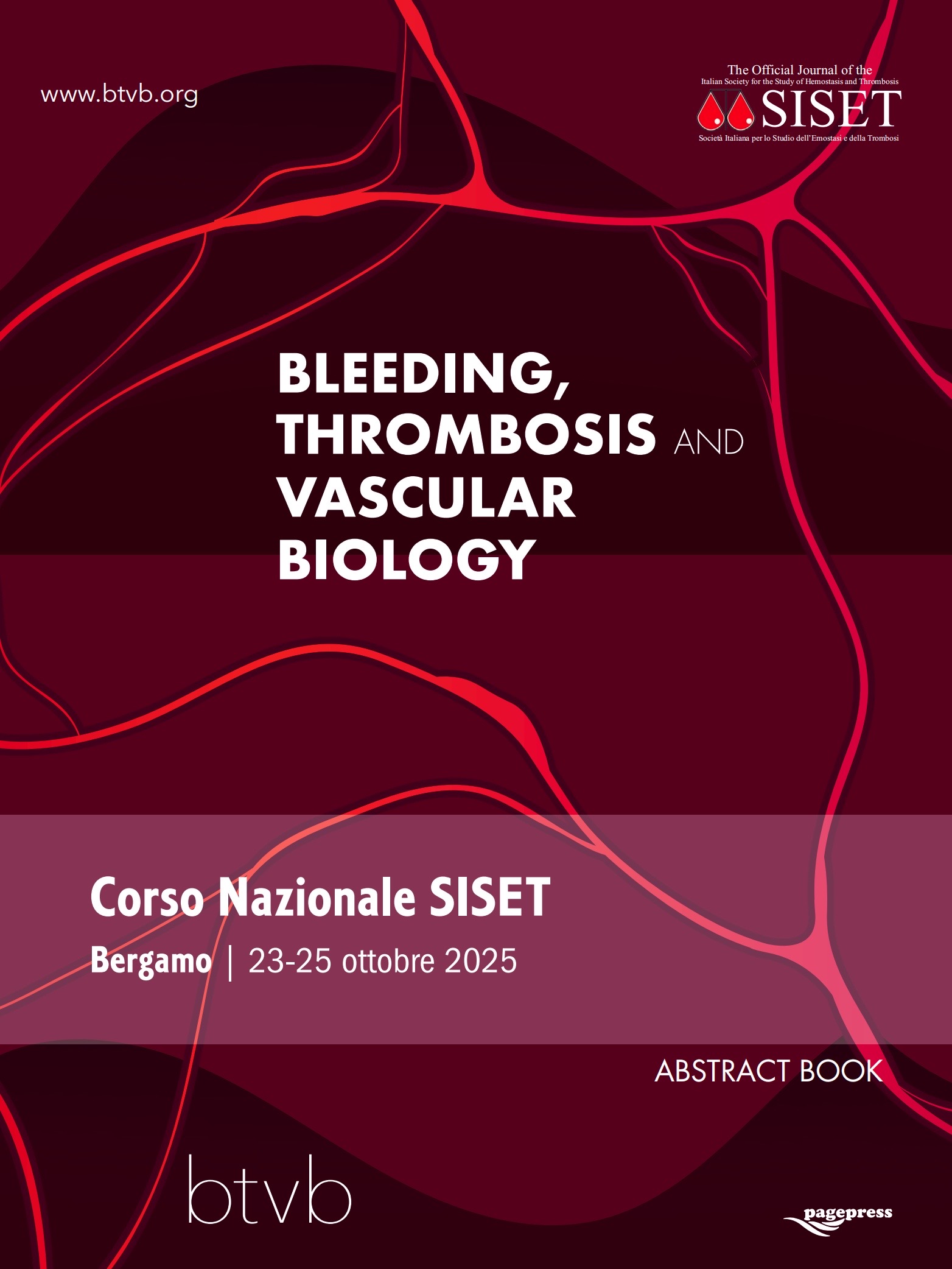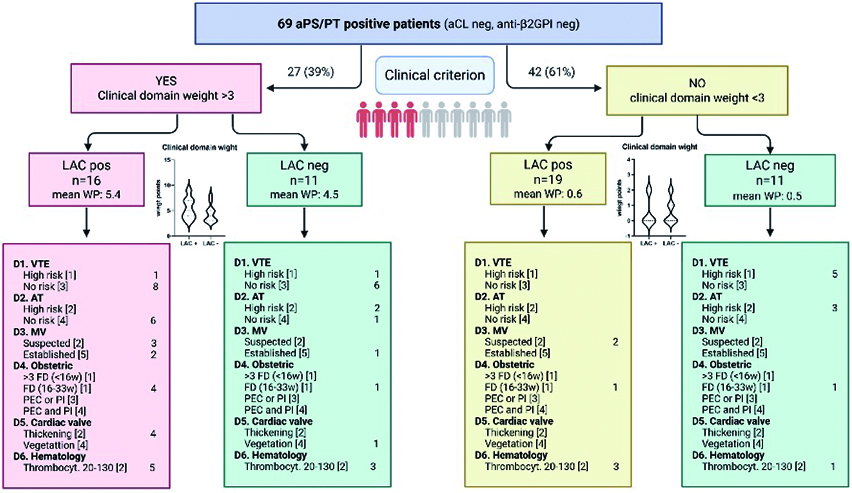29th National Conference of the Italian Society for the Study of Hemostasis and Thrombosis, 2025
Vol. 4 No. s1 (2025)
CO17 | Clinical relevance of isolated anti-phosphatidylserine/ prothrombin antibody positivity
A. Hoxha1, P. Žigon2,3, L. Katja2,3, S. Čučnik2,4, Ž. Rotar2,5, S. Gavasso1, P. Zerbinati1, G. Gobbo1, P. Simioni1 | 1University of Padua, Internal Medicine Unit, Thrombotic and Hemorrhagic Centre, Department of Medicine-DIMED, Padua, Italy; 2University Medical Centre Ljubljana, Department of Rheumatology, Ljubljana, Slovenia; 3University of Primorska, Faculty of Mathematics, Natural Sciences and Information Technologies, Koper, Slovenia; 4University of Ljubljana, Faculty of Pharmacy, Ljubljana, Slovenia; 5University of Ljubljana, Faculty of Medicine, Ljubljana, Slovenia
Publisher's note
All claims expressed in this article are solely those of the authors and do not necessarily represent those of their affiliated organizations, or those of the publisher, the editors and the reviewers. Any product that may be evaluated in this article or claim that may be made by its manufacturer is not guaranteed or endorsed by the publisher.
All claims expressed in this article are solely those of the authors and do not necessarily represent those of their affiliated organizations, or those of the publisher, the editors and the reviewers. Any product that may be evaluated in this article or claim that may be made by its manufacturer is not guaranteed or endorsed by the publisher.
Published: 22 October 2025
50
Views
0
Downloads
Similar Articles
- PO23 | Plasmic score applicability for the diagnosis of thrombotic microangiopathy associated with acquired ADAMTS13 deficiency in emergency settings at the hub laboratory of AUSL Romagna: state of the art and future prospects , Bleeding, Thrombosis and Vascular Biology: Vol. 4 No. s1 (2025)
- CO16 | The predictive value of high-sensitivity C-reactive protein for assessing thrombosis risk in non-small cell lung cancer , Bleeding, Thrombosis and Vascular Biology: Vol. 4 No. s1 (2025)
- CO22 | Assessment of coagulation profiles in septic patients using viscoelastic coagulation monitoring and rotational thromboelastometry in an internal medicine setting , Bleeding, Thrombosis and Vascular Biology: Vol. 4 No. s1 (2025)
- CO19 | Hypercoagulability in wild-type transthyretin amyloidosis: evidence from whole blood thromboelastometry , Bleeding, Thrombosis and Vascular Biology: Vol. 4 No. s1 (2025)
- CO15 | Longitudinal coagulation profiling of individuals undergoing gender-affirming hormone therapy: the hyper-gender study , Bleeding, Thrombosis and Vascular Biology: Vol. 4 No. s1 (2025)
- CO20 | Coagulation alterations as prognostic indicators in septic patients , Bleeding, Thrombosis and Vascular Biology: Vol. 4 No. s1 (2025)
- CO14 | Inflammation and fibrinolysis biomarkers as predictors of cancer risk in healthy subjects: results from the hypercan study , Bleeding, Thrombosis and Vascular Biology: Vol. 4 No. s1 (2025)
- CO25 | Thromboinflammation and ros accumulation in individuals with high lipoprotein(a) levels , Bleeding, Thrombosis and Vascular Biology: Vol. 4 No. s1 (2025)
- PO25 | Baseline thrombin generation test does not predict thrombotic events in acute leukemia: a monocentric prospective study , Bleeding, Thrombosis and Vascular Biology: Vol. 4 No. s1 (2025)
- CO24 | Extracellular vesicles profiles in patients with wild-type transthyretin amyloidosis , Bleeding, Thrombosis and Vascular Biology: Vol. 4 No. s1 (2025)
1-10 of 122
Next
You may also start an advanced similarity search for this article.









